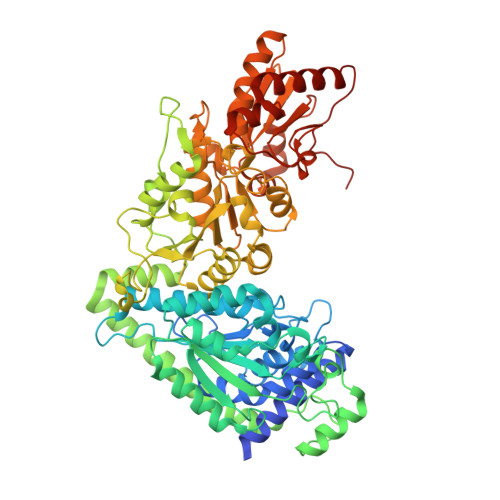Evidence of Diradicals Involved in the Yeast Transketolase Catalyzed Keto-Transferring Reactions.
Hsu, N.S., Wang, Y.L., Lin, K.H., Chang, C.F., Ke, S.C., Lyu, S.Y., Hsu, L.J., Li, Y.S., Chen, S.C., Wang, K.C., Li, T.L.(2018) Chembiochem 19: 2395-2402
- PubMed: 30155962
- DOI: https://doi.org/10.1002/cbic.201800378
- Primary Citation of Related Structures:
5XPS, 5XQA, 5XQK, 5XRV, 5XT0, 5XT4, 5XTX, 5XU2, 5XU9 - PubMed Abstract:
Transketolase (TK) catalyzes a reversible transfer of a two-carbon (C 2 ) unit between phosphoketose donors and phosphoaldose acceptors, for which the group-transfer reaction that follows a one- or two-electron mechanism and the force that breaks the C2"-C3" bond of the ketose donors remain unresolved. Herein, we report ultrahigh-resolution crystal structures of a TK (TKps) from Pichia stipitis in previously undiscovered intermediate states and support a diradical mechanism for a reversible group-transfer reaction. In conjunction with MS, NMR spectroscopy, EPR and computational analyses, it is concluded that the enzyme-catalyzed non-Kekulé diradical cofactor brings about the C2"-C3" bond cleavage/formation for the C 2 -unit transfer reaction, for which suppression of activation energy and activation and destabilization of enzymatic intermediates are facilitated.
Organizational Affiliation:
Genomics Research Center, Academia Sinica, Taipei, 115, Taiwan.



















